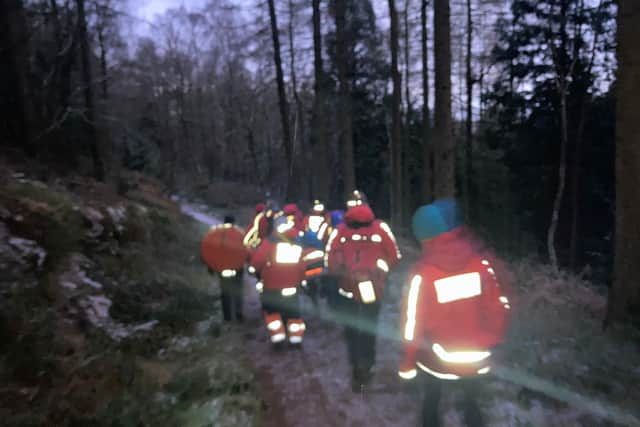The Yorkshire Vet: When Julian became the patient after mountain biking accident
The ambulance was waiting for me in the middle of the woods, right at the bottom of the path. In my prone position, I was trying to fathom how I could get out of the bag, off the stretcher and into the ambulance. Luckily, I didn’t have to- there was a well-rehearsed system and I was seamlessly slid from one carrying device to another and into the lovely warm vehicle, where I chatted to Charlie who was on his first day of training to be a paramedic.
At the hospital, I apparently arrived just before the rush and it wasn’t too long before I was on another trolley- my third of the afternoon. Charlie expertly and considerately removed my muddy shoes and helped take off my biking trousers- he’d passed another test. I thanked my lucky stars it hadn’t been as muddy as my previous ride. I might have presented a serious biohazard to the triage ward! At least today’s icy conditions had kept me clean, if not intact.
Advertisement
Hide AdAdvertisement
Hide AdThe X-rays ruled out a fracture, but confirmed that my patella ligament was ruptured. This explained why my kneecap was in the wrong place and not attached to the top of the shinbone. No wonder my leg didn’t work. It was clear that this would need to be fixed if I required a functional leg (which I do). But before it could be fixed, I needed to get home.


“We’re not really supposed to let you out until we are sure you’re competent on the crutches,” protested the emergency clinician. At this stage, because any forces which tended my limb to flex were excruciatingly painful, all I could do was move backwards. This didn’t count as competent, and everyone other than me pulled unsatisfactory faces. Eventually, we all compromised with a sort of sideways shuffle.
The following day involved many telephone conversations, explaining and apologising for messing up work shifts, rotas and life in general for lots of people. I improved my skill on the crutches and phoned up the emergency department to pass on the exciting news that I could now propel myself forwards as well as sideways and backwards. The next thing was an appointment with a surgeon; after that, I felt sure, the subsequent stages would be protracted.
The patella ligament is the whopping one at the front and below the knee which keeps the thigh muscles attached to the upper shin bone, via the knee cap. It keeps the leg straight when standing, makes it possible to extend the leg and allows the foot to be lifted off the ground. Without it, I discovered in real-life and by reading the internet, it is not possible to “have useful limb function” i.e. it is not possible to walk.
Advertisement
Hide AdAdvertisement
Hide AdThe next day, I hobbled towards the consulting room door of the specialist surgeon. I think I had a reasonable idea of what he would tell me. I knew enough about evaluating signs and radiographs, albeit in four-legged creatures, to know what to expect. After a brief but thorough examination and review of the X-rays I listened to the plan. Once again, roles would be reversed. I’d be the patient, worried and quaking ready for the scratch of the needle then the flood of Propofol anaesthetic before losing consciousness. At the mercy of the anaesthetist and another man’s scalpel. Of course, I had complete and utter confidence in their knowledge, skills and expertise. But it didn’t mean I wasn’t worried.